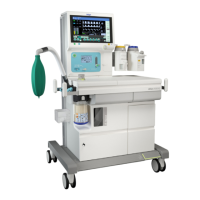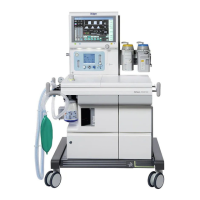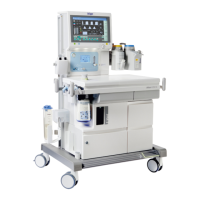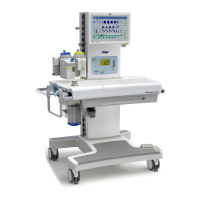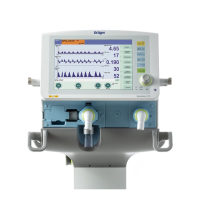Ventilation
146 Instructions for Use Apollo SW 4.5n
Part Number: 9053586, 3rd edition
Changing between ventilation
modes
When changing to a different ventilation mode, the
presettings are adopted or appropriately derived from
the parameters of the preceding mode.
Parameters which are identical in both ventilation
modes are adopted directly (e.g. Freq., T
INSP, ΔPPS,
Trigger).
When changing from volume-controlled to
pressure-controlled ventilation modes:
The measured parameter PLAT is adopted as the
new value for P
INSP. If a valid plateau pressure value
is not available, the last value used in the case will be
used as the preset value (the preset value of P
INSP
will be at least PEEP + 5)
. The PAW LOW alarm limit
will be pre-set to P
INSP-2 if the alarm limit was higher
than P
INSP-2 during volume-controlled ventilation.
When changing from pressure-controlled to
volume-controlled ventilation modes:
The new tidal volume V
T is adopted from the
measured minute volume MV and the set frequency
Freq. Only the minute volume applied by the
ventilator is taken into account. Pressure supported
breathing strokes by the patient are disregarded.
When changing from automatic ventilation
modes to Pressure Support mode (optional):
The set PEEP, ΔP
PS, and Trigger are adopted.
If
ΔPPS and/or Trigger were set to “OFF”, the last
values used are adopted in Pressure Support mode.
In all other cases the configured default settings are
used.
The P
AW LOW alarm limit will be pre-set to
PEEP+ΔP
PS-2 if the alarm limit was higher than
PEEP+ΔP
PS-2 during automatic ventilation mode.
When changing from Pressure Support mode
(optional) to automatic ventilation modes:
The set PEEP, ΔP
PS, and Trigger values are
adopted. The last values that were set are used for
the other parameters and the configured default
settings in all other cases.
Note: In minimum flow mode, the following
secondary effects may occur that affect
ventilation of the patient:
– Leakage: Check if the breathing bag is
adequately filled.
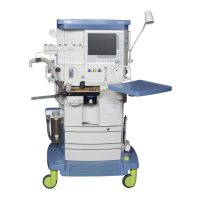
